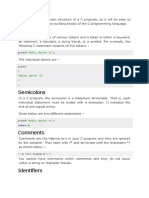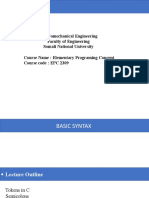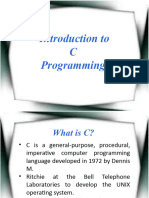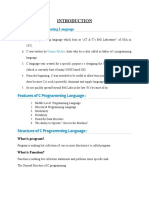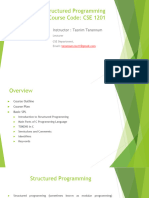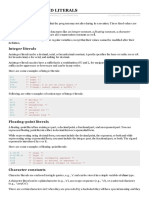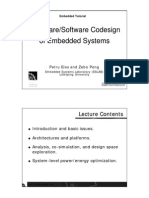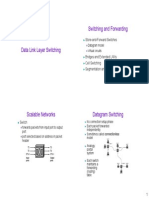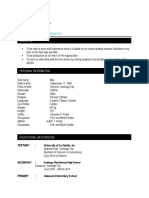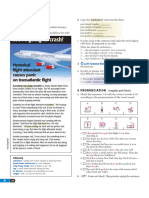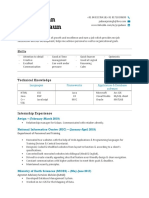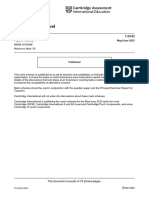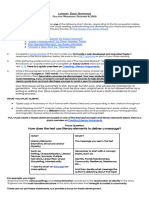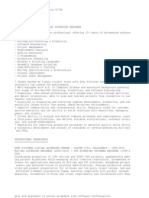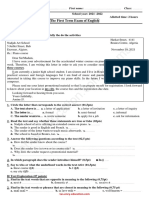0% found this document useful (0 votes)
44 views2 pages4c Basic Syntax
The document discusses basic syntax elements in C programming including tokens, semicolons, comments, identifiers, keywords, and whitespace. Tokens include keywords, identifiers, constants, strings, and symbols. Semicolons terminate statements. Comments start with /* and end with */. Identifiers name variables and functions and start with letters or underscores. Keywords are reserved words that cannot be used as identifiers. Whitespace includes blanks, tabs, and newlines and separates elements in statements.
Uploaded by
loffycrazeCopyright
© © All Rights Reserved
We take content rights seriously. If you suspect this is your content, claim it here.
Available Formats
Download as PDF, TXT or read online on Scribd
0% found this document useful (0 votes)
44 views2 pages4c Basic Syntax
The document discusses basic syntax elements in C programming including tokens, semicolons, comments, identifiers, keywords, and whitespace. Tokens include keywords, identifiers, constants, strings, and symbols. Semicolons terminate statements. Comments start with /* and end with */. Identifiers name variables and functions and start with letters or underscores. Keywords are reserved words that cannot be used as identifiers. Whitespace includes blanks, tabs, and newlines and separates elements in statements.
Uploaded by
loffycrazeCopyright
© © All Rights Reserved
We take content rights seriously. If you suspect this is your content, claim it here.
Available Formats
Download as PDF, TXT or read online on Scribd
/ 2


